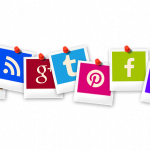by Kira Hawes
Have you been tone deaf? No, we aren’t talking about your singing voice, rather, your messaging. Being tone deaf in business means that the organization has failed to reflect on the state of the external environment or is using language that is off-putting or does not fit the situation.
Using the right tone in messaging is a crucial part of communications that is often overlooked. No matter how relevant or interesting a piece may be, if the tone is off it won’t be nearly as successful.
We have all been in this situation at least once, say you get a text message that says “Fine, whatever.” You may read that message as aggressive and confrontational when I may read it as passive and easy-going. This happens in an organization’s external communications as well as peoples’ personal lives.
Striking the right tone requires critical thinking not just about your business goals but also about the impact of your public messaging. Tone is about more than just the words used. Although words can imply intent, another aspect of tone that has to be considered is the external environment. Think of it as essentially reading the room. Failing to evaluate the external environment may lead to sending out messaging at inappropriate times. Have you ever been in a room and seen something that just did not fit, whether the aesthetic didn’t match the room, or the message did not make sense in the context of the space? This happens in communications as well. This is not what you want to be remembered for.
Sometimes the best tone is silence. If more important things are going on, talking about something else entirely different can seem tone deaf. We’ve seen this happen with brands that schedule social media posts and then not take them down in the midst of a major news event. Others have tried to jump on hashtags without looking into the actual topic they are being used for.
Once you have evaluated the external environment and decided that your message is fitting and relevant, you have to find the right language for the actual message. This is where understanding who your audience is, and how your audience receives information, will make a significant difference. Many organizations stray away from the traditional business formal messaging format, which can be a good strategy to engage a particular audience; however, you have to do this in a way that still makes sense within your industry and your brand. If you are trying to sell your product or service to a certain industry, but you don’t speak their language, they may not feel that you understand their pain points.
As communications professionals we have all heard the importance of knowing your audience and finding the right tone is a crucial part of understanding the audience. Taking the extra time to evaluate how the message fits with the world around you ensures that it will be noticed.
Have you been struggling with your tone? Reach out to us about how we can help your business craft the perfect message.

